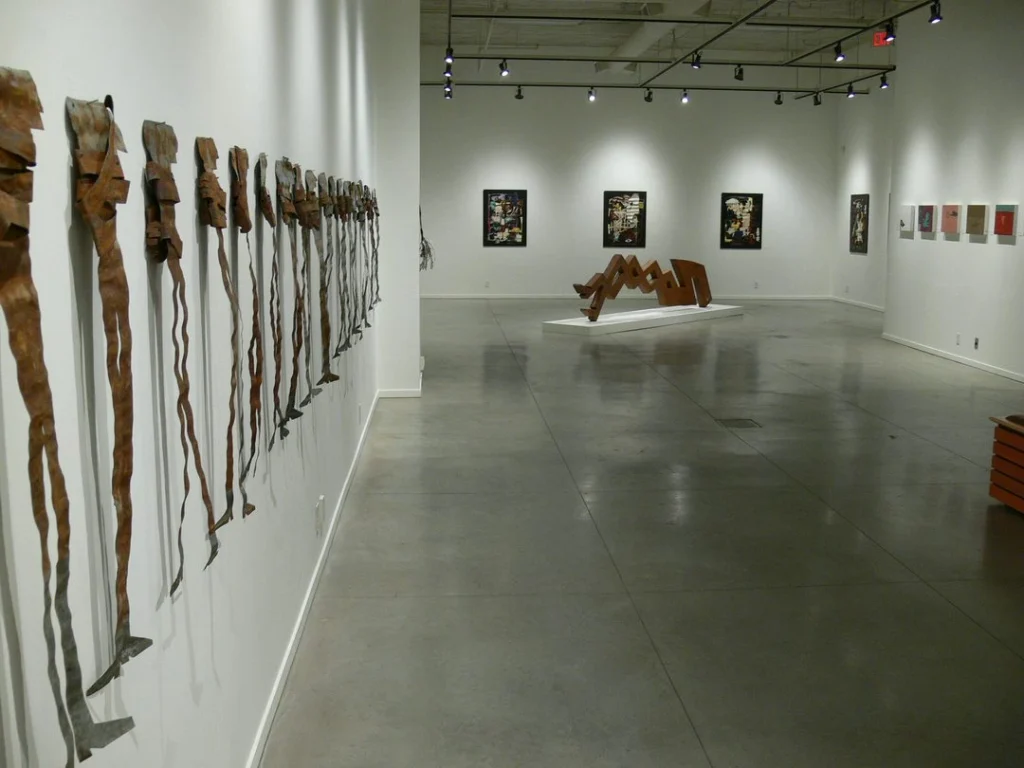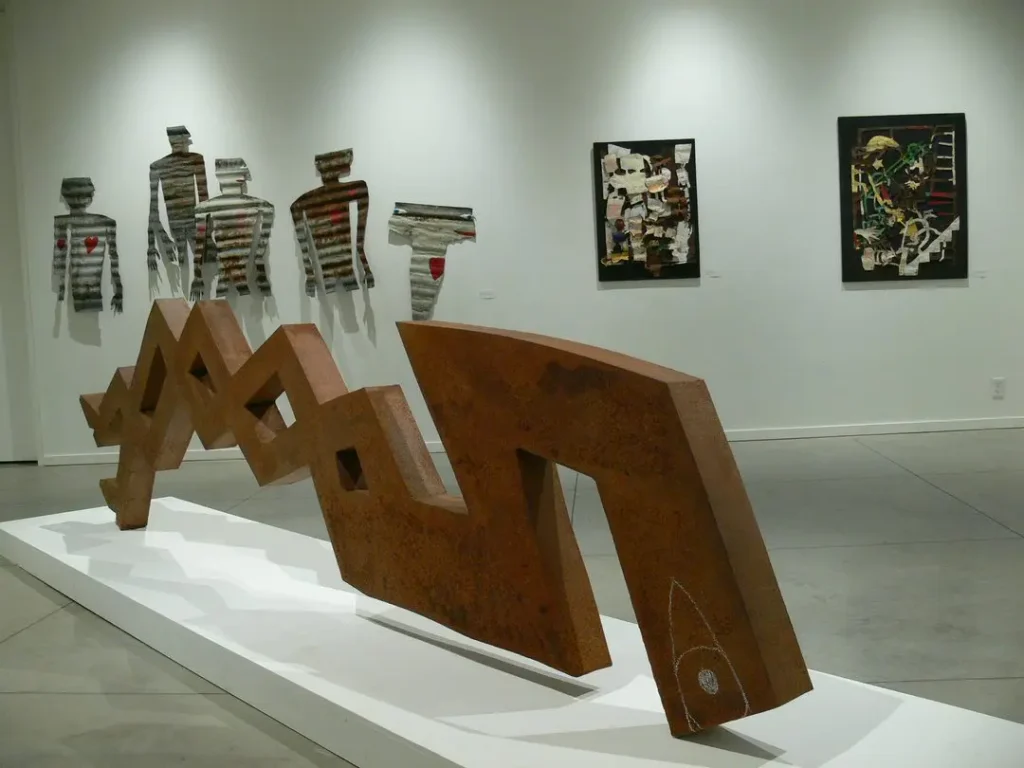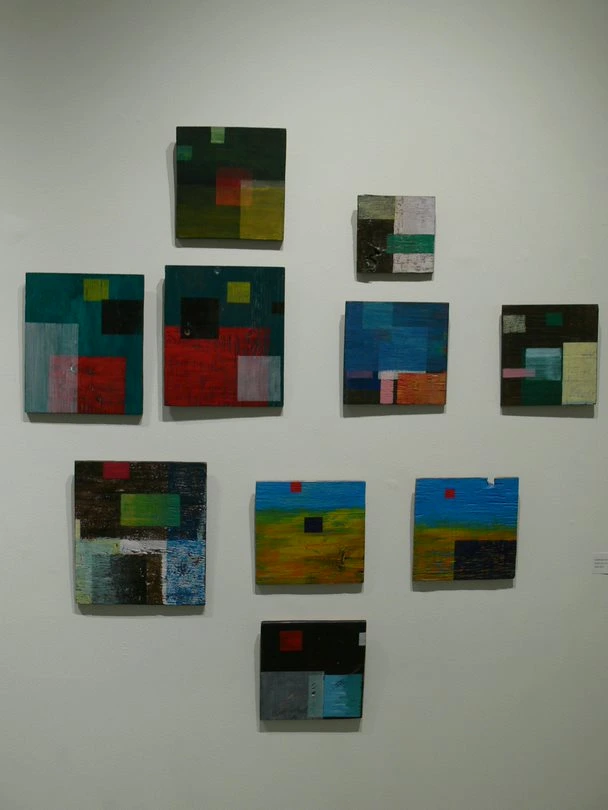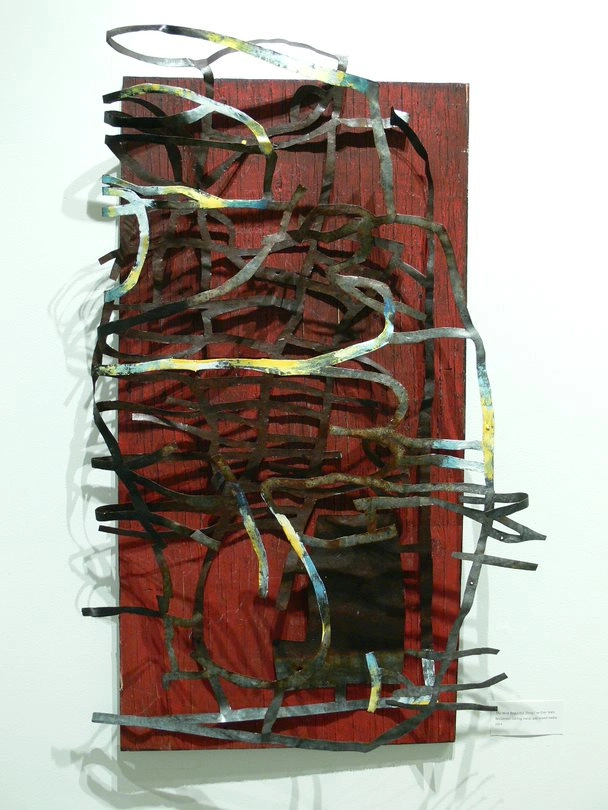Courtney Andersen: This is Relatively Urgent
Curated by Rod Taylor
“Outsider art” is a term sometimes used to describe the work produced by artists who operate outside the mainstream of contemporary art. They tend to be self taught, and are largely unaware of the greater world of art in which they live. On the surface of it, this term may seem to apply to Courtney Andersen’s work. His style is his own, and he tends towards simplicity of design and a certain roughness of materials and execution.
With years of academic training and teaching experience however, Courtney is no outsider. Trained as a printmaker, Courtney moved to the Kootenays from the urban hustle and bustle of Calgary in the early 90’s, around the same time that the future members of the Royal Winnipeg Art Lodge were fashioning their own artistic identities. Perhaps coincidentally, around the same time he began using the decidedly non-fine art materials of reclaimed metal, wood and hardware store paint as his materials of choice. So it isn’t so much that he is unaware of the world of fine art, as that he was (and is) seemingly unconcerned about it, at least as far as it relates to his own practice.
Humour is often an element in his work, both in the quirky figures and in the titles of the pieces. It’s the central feature of the smaller pieces (such as those on your left) that he has sold hundreds of, and is perhaps best known for locally. In most of the work in this exhibition however, produced over the last decade or so, humour is a more subtle feature where it’s present at all. While that on its own doesn’t necessarily make them better, it has given him room to explore the quieter aspects of his work, and allowed some of them to come forward in a way that they wouldn’t have otherwise. Add scale and diversity to that, and the result is a chance to gain greater insight into the depth and nuance of his rather singular artistic practice.
Much of the work here has seldom been shown, although it’s certainly deserving of a wider audience. For Courtney, as with many rural artists, living in a relatively remote location can make it challenging to gain the exposure and make the connections necessary to generate exhibitions and sales. But while an outsider in some ways, he’s also an artist who has persisted in making sense of his own approach and limitations, self-imposed or otherwise. And apart from whatever other future opportunities his work may present, I for one think that “Mr. Ziggety Zaggety” would make a fine addition to Nelson’s public art scene.
Courtney Villads Anderson
Courtney Villads Andersen was born in Calgary and grew up in Alberta. He began his art training at Alberta College of Art and Design, completing a four year diploma. He went on to study at the University of Calgary (BFA 1983), and at Nova Scotia College of Art and Design (MFA 1986). He also completed a two year residency at the Banff Centre (1987—1989). The focus of his studies has been painting, printmaking, sculpture, and collage. After traveling in South America he discovered Nelson and settled down to raise his children. Life in the Kootenays has been both challenging and rewarding. Andersen has enjoyed his interactions with the students and faculty at Kootenay Studio Arts at Selkirk College over the past 21 years where he currently teaches Basic Visual Language.
Artist Statement
My current work represents the long term relationship I have had with my materials, and interest in the figure. Since moving to the West Kootenay in 1993 my focus has shifted from painting and print-making to wall sculpture. I am now also experimenting with free-standing three-dimensional steel forms. I have become intrigued with the materials and textures around me—rusty metal, weathered boards, shovel parts, saw blades, and other discarded materials. These objects, beautiful in their own right, are figured in my art. The only tools I use are snips, hammer, and an anvil (a piece of railroad track).
Many of my works in metal have been made in multiples, just has I had done for years as a print-maker. Currently I enjoy the idea of hanging them in a way to address the idea of pattern or repeated motif. Visual rhythm is apparent in nature, and has always appeared in artistic expression.















